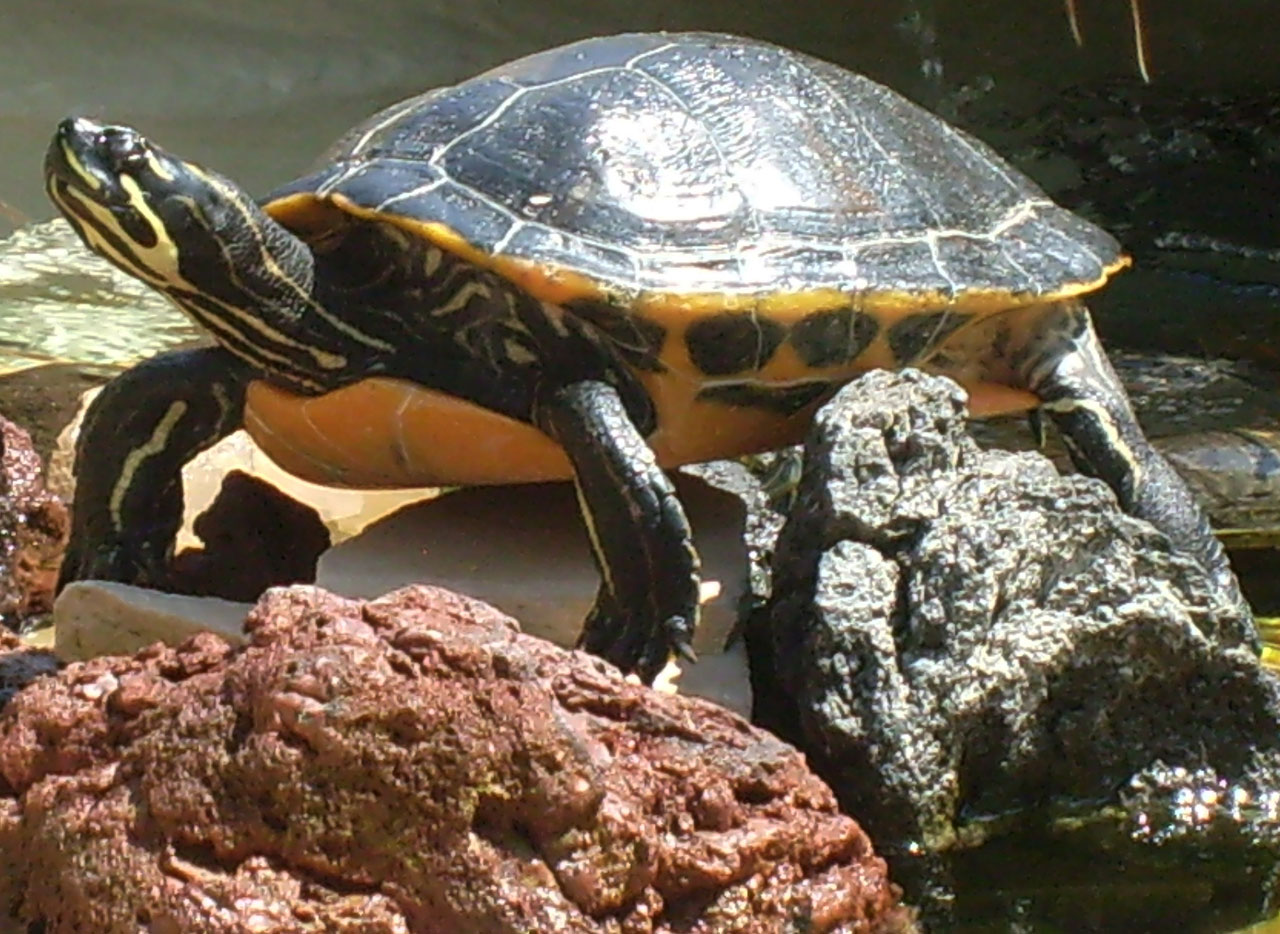Why Are Turtles Slow?
Turtles are fascinating creatures that have captured the curiosity of humans for centuries. One of the most notable characteristics of turtles is their slow movement. While other animals can sprint or fly, turtles seem to take their time, moving at a leisurely pace. This article aims to explore the reasons behind the slow nature of turtles, delving into their anatomy, physiology, and evolutionary adaptations.
The Anatomy of Turtles
Turtles have a unique body structure that contributes to their slow movement. Their shell, composed of a dorsal carapace and a ventral plastron, provides protection but also adds weight. This shell, made of bone and covered by keratinous scutes, acts as a natural armor, safeguarding the turtle from predators. However, it also limits their mobility, making quick movements challenging.
Furthermore, turtles have a slow metabolism, which affects their overall energy levels. Their heart rate is significantly lower compared to other animals, resulting in a reduced oxygen supply to their muscles. This limited energy supply contributes to their slow movement and endurance.
Evolutionary Adaptations
Turtles have evolved over millions of years, adapting to their environment and developing unique characteristics. Their slow movement can be attributed to several evolutionary adaptations:
- Shell Protection: The evolution of the turtle’s shell provided them with excellent protection against predators. However, this protective feature also limits their agility and speed.
- Aquatic Lifestyle: Many turtle species are adapted to an aquatic lifestyle, where speed is less crucial for survival. Their slow movement allows them to navigate through water with precision and control.
- Longevity: Turtles are known for their exceptional longevity, with some species living for over a hundred years. Their slow metabolism and movement contribute to their extended lifespan.
Environmental Factors
The environment in which turtles live also plays a significant role in their slow movement. Here are some environmental factors that contribute to their pace:
- Temperature: Turtles are ectothermic, meaning their body temperature is regulated by the external environment. Cooler temperatures slow down their metabolism, resulting in slower movement.
- Habitat: Turtles inhabit various habitats, including forests, deserts, and aquatic environments. Each habitat presents unique challenges that influence their movement. For example, turtles living in dense forests may have limited space to move quickly, while aquatic turtles rely on their slow movement to navigate through water efficiently.
- Food Availability: Turtles are opportunistic feeders, and their slow movement allows them to conserve energy while searching for food. They can patiently wait for prey or slowly graze on vegetation.
Frequently Asked Questions (FAQ)
1. Why do turtles walk so slowly?
Turtles walk slowly due to their unique anatomy and physiology. Their shell provides protection but limits their mobility, and their slow metabolism results in reduced energy levels.
2. Can turtles move quickly if they need to?
While turtles are generally slow-moving, they can exhibit bursts of speed when necessary. For example, some aquatic turtles can swim swiftly to escape predators or catch prey.
3. Are all turtle species slow?
Not all turtle species are slow. Some species, such as the leatherback sea turtle, are relatively faster due to their streamlined body shape and adaptations for swimming.
4. Do turtles move faster in water?
Yes, turtles are generally more agile and faster in water compared to their movement on land. Their limbs are adapted for swimming, allowing them to navigate through water with greater ease.
5. How does a turtle’s shell affect its speed?
A turtle’s shell provides excellent protection but also adds weight and limits mobility. The shell’s structure and attachment to the turtle’s skeleton make quick movements challenging.
6. Do turtles ever run?
Turtles do not run in the traditional sense, as their anatomy and physiology are not designed for rapid movement. However, they can exhibit bursts of speed when necessary, such as when avoiding danger or during mating rituals.
Summary
Turtles are slow-moving creatures due to their unique anatomy, physiology, and evolutionary adaptations. Their shell provides protection but limits mobility, and their slow metabolism affects their energy levels. Environmental factors such as temperature, habitat, and food availability also contribute to their slow pace. While turtles may not be the fastest animals, their slow and steady approach has allowed them to thrive in various ecosystems for millions of years.



